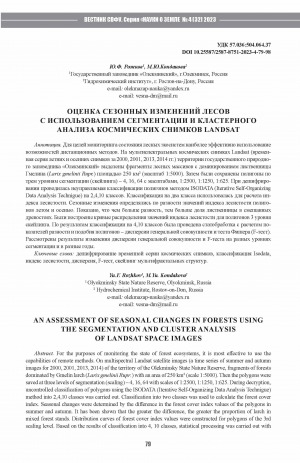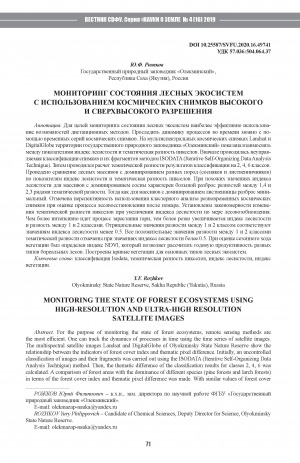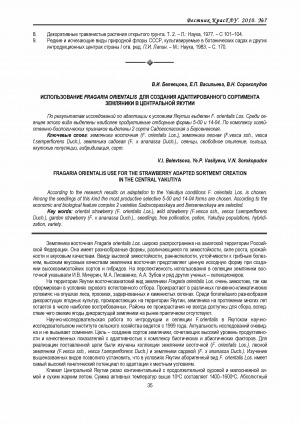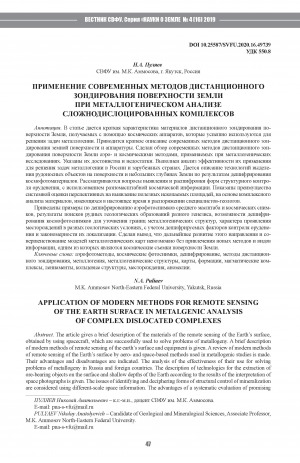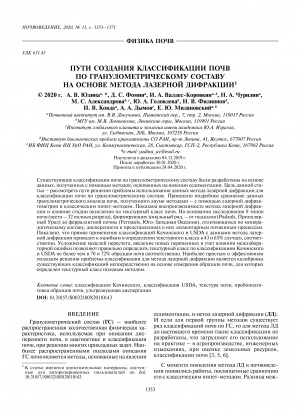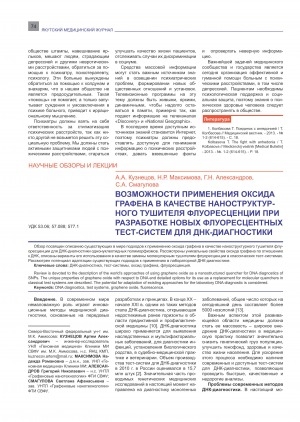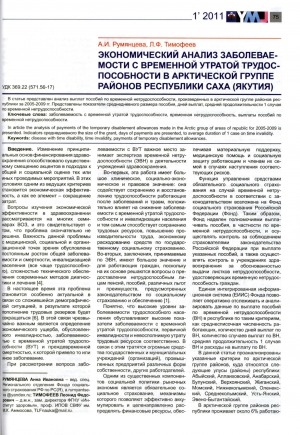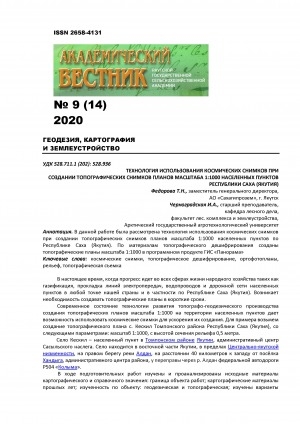Для целей мониторинга состояния лесных экосистем наиболее эффективно использование возможностей дистанционных методов. На мультиспектральных космических снимках Landsat ( временная серия летних снимков за 1995, 2000, 2004, 2008, 2013, 2016 гг.) территории государственного природного заповедника "Олекминский" выделены фрагменты площадью 250 км (масштаб 1:5000). Затем были сохранены полигоны по трем уровням сегментации- 4, 16, 64 с масштабами, 1:2500, 1:1250, 1 ( :625. При дешифрировании проводилась неуправляемая классификации полигонов методом ISODATA Iterative Self-Organizing Data Analysis Technigue) на 2,4,10 классов. Были построены кривые распределения значений индекса лесистости для полигонов 3 уровня сегментации. Результаты классификации на 4 4 класса использовались при расчете тематической разности пикселов. По результатам классификации на ,10 классов была проведена статобработка с расчетом показателей разности и подобия полигонов - дисперсии генеральной совокупности и теста Фишера (F-тест). Описан способ определения нарушенности экосистем и их восстановления по кривым распределения индекса лесистости. Рассмотрены результаты изменения дисперсии генеральной совокупности и F-теста на разных уровнях сегментации и на разных этапах восстановления лесов. Определены особенности перехода между тремя уровнями самоподобия (скейлинг) мультифрактальных структур по мере восстановления лесов.
For the purposes of monitoring the state of forest ecosystems, it is most e ective to use the capabilities 2 of remote methods. Fragments with an area of 250 km (scale 1:5000) were identi ed on Landsat multispectral satellite images (time series of summer images for 1995, 2000, 2004, 2008, 2013, 2016) of the Olyokminsky State Nature Reserve. Then polygons were saved at three levels of segmentation: 4, 16, 64 with the scales of 1:2500, 1 :1250, 1:625. When deciphering, an unmanaged classi cation of polygons was carried out using the ISODATA method (Iterative Self-Organizing Data Analysis Technigue) into 2, 4, 10 classes. Distribution curves for the values of the forest cover index for polygons of the 3rd level of segmentation were constructed. The results of classi cation into 4 classes were used to calculate the thematic pixel di erence. According to the classi cation results for 4.10 classes, statistical processing was carried out with the calculation of the di erence and similarity indicators of polygons, the dispersion of the general population and the Fisher test (F-test). A method is described for determining the disturbance of ecosystems and their restoration from the distribution curves of the forest cover ВЕСТНИК СВФУ. Серия "НАУКИ О ЗЕМЛЕ ө 2 (30) 2023 index. The results of the change in the dispersion of the general population and the F-test at di erent levels of segmentation and at di erent stages of forest restoration are considered. The features of the transition between


